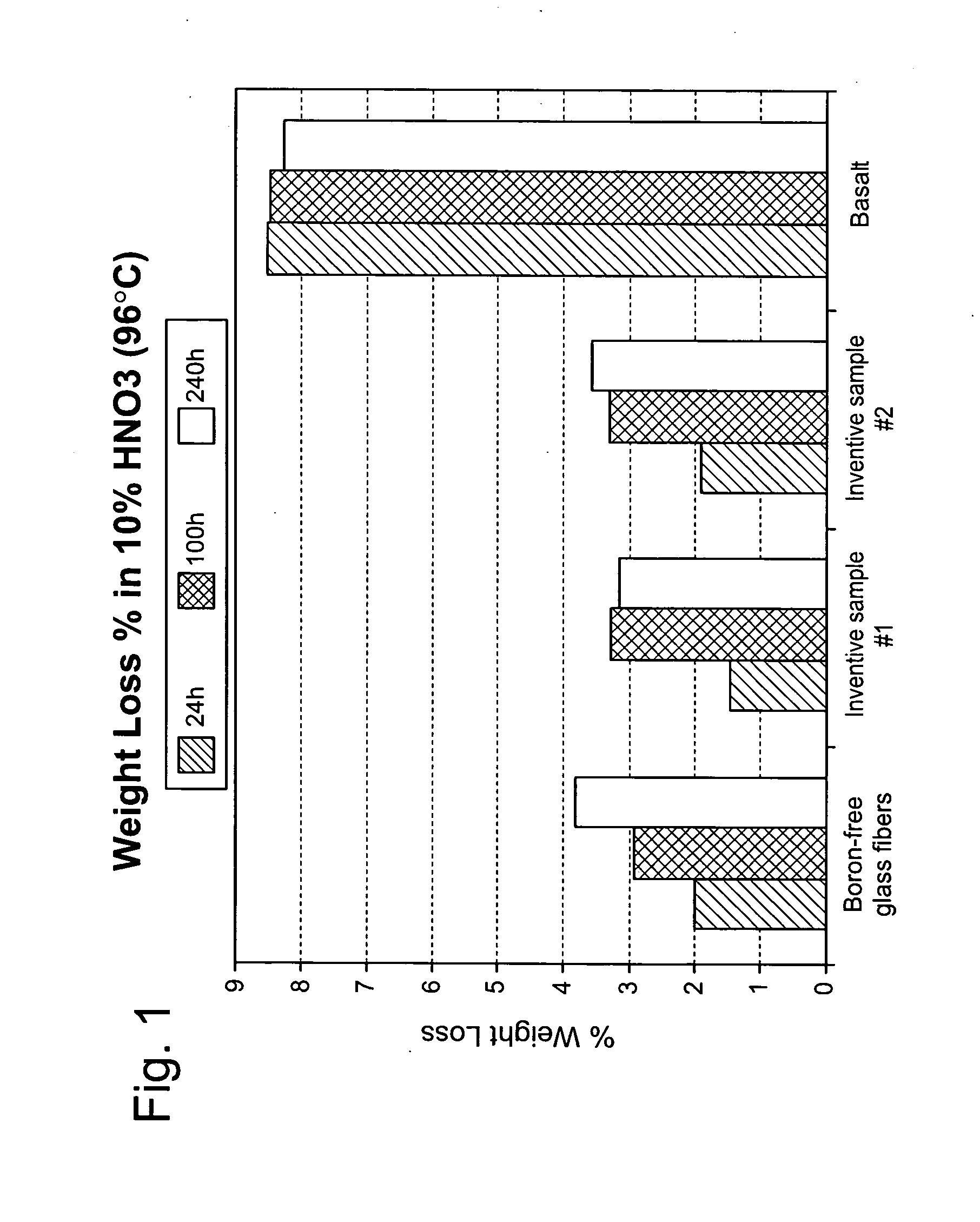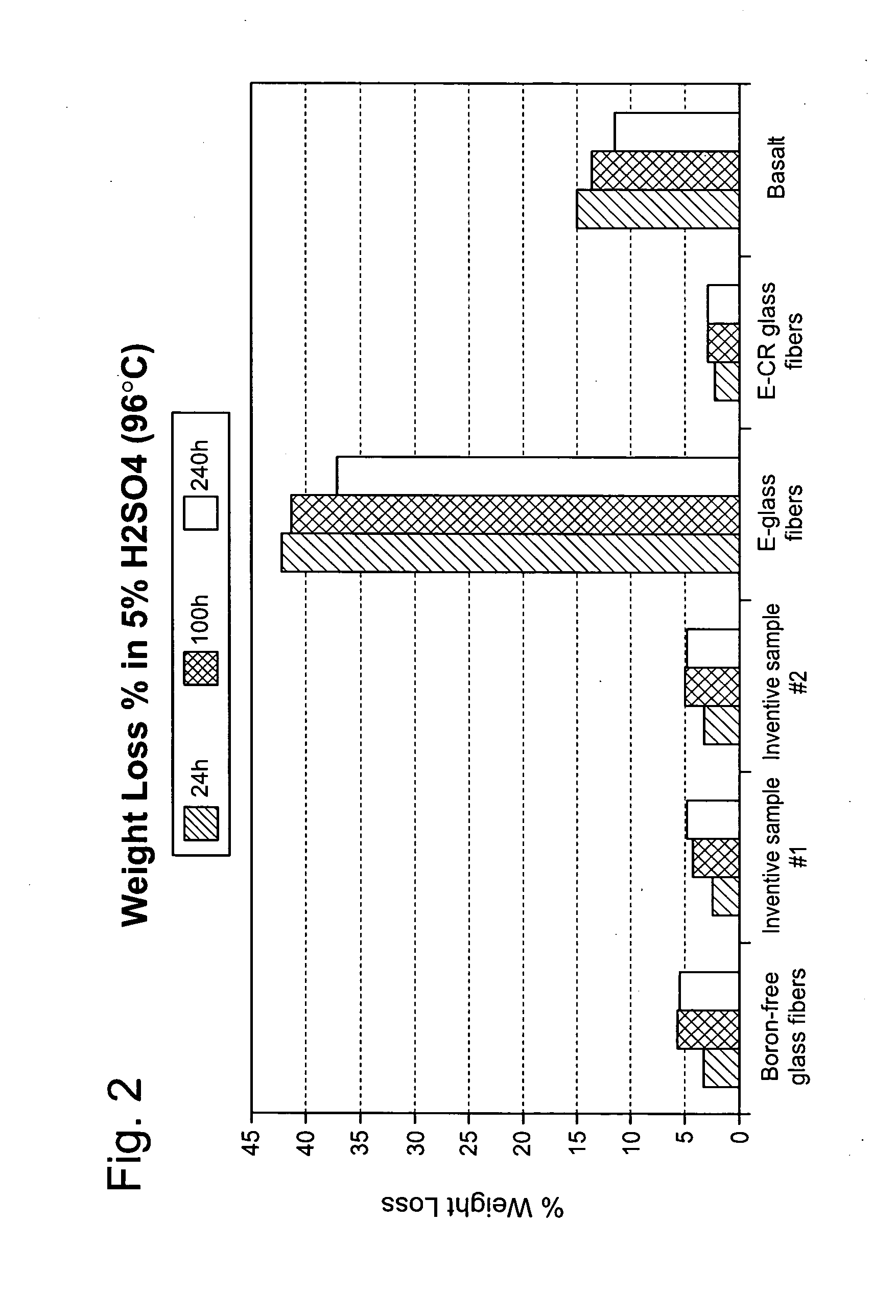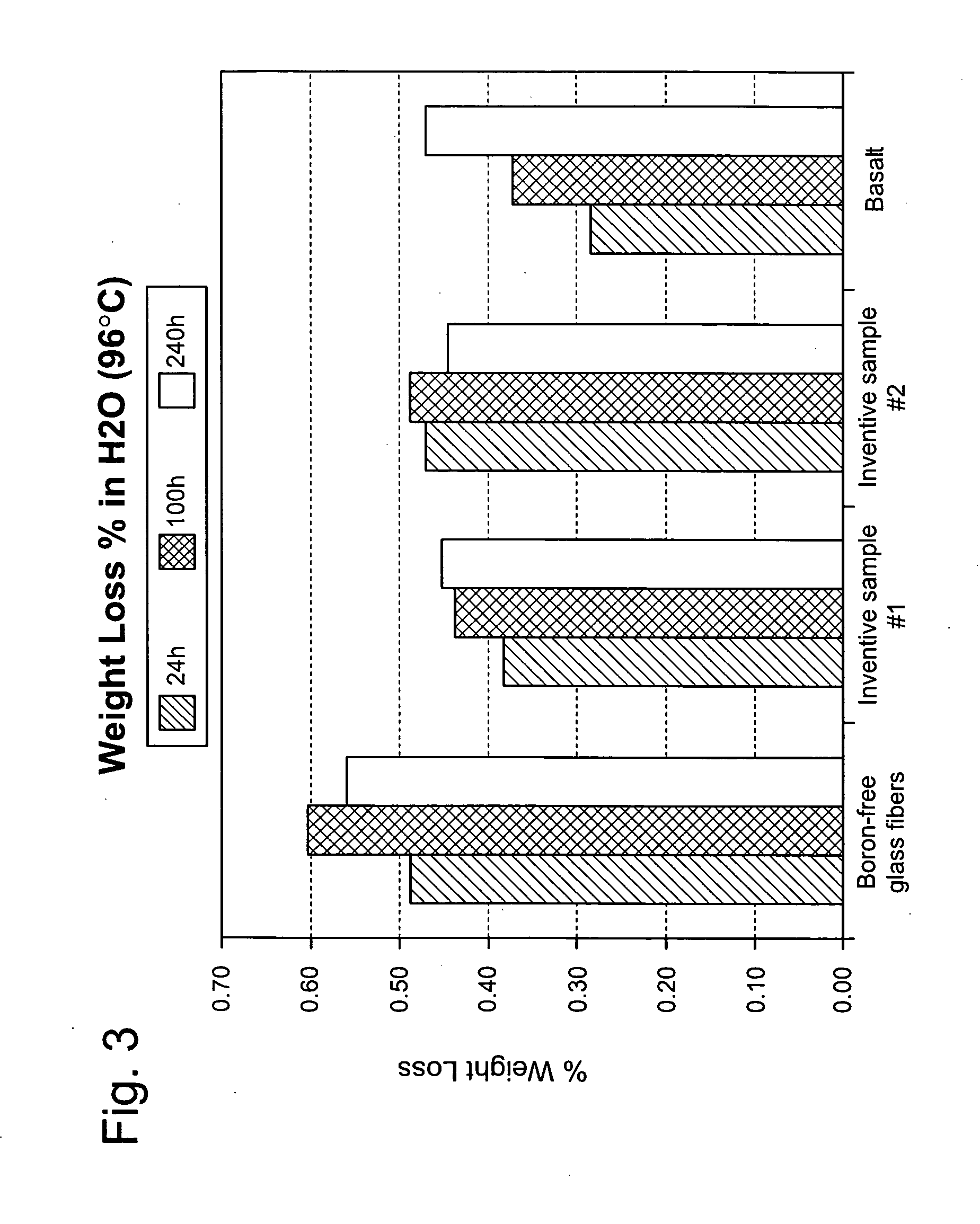Composition for high performance glass, high performance glass fibers and articles therefrom
a technology of high-performance glass and high-performance glass fibers, which is applied in the field of composition of high-performance glass, high-performance glass fibers and articles therefrom, can solve the problems of reducing productivity, process interruption, and forming r-glass and s-glass fibers at a dramatically higher cost than e-glass fibers, and achieves reduced production costs, improved product quality, and reduced fiberizing temperature
- Summary
- Abstract
- Description
- Claims
- Application Information
AI Technical Summary
Benefits of technology
Problems solved by technology
Method used
Image
Examples
example 1
Glass Formation
[0035]The glasses in the examples set forth in Tables 2A-2P were melted in platinum crucibles or in a continuous platinum-lined melter for determining the mechanical and physical properties of the glass and fibers produced therefrom. The units of measurement for the physical properties are: Viscosity (° F.), Liquidus temperature (° F.) and ΔT (° F.). In some examples the glasses were fiberized and Strength (KPsi), Density (g / cc), Modulus (MPsi), Softening Point (° F.) and coefficient of thermal expansion (CTE) (in / in / (° F.)) were measured.
[0036]The fiberizing temperature was measured using a rotating spindle viscometer. The fiberizing viscosity is defined as 1000 Poise. The liquidus temperature was measured by placing a platinum container filled with glass in a thermal gradient furnace for 16 hours. The greatest temperature at which crystals were present was considered the liquidus temperature. The modulus was measured using the sonic technique on a single fiber of gl...
example 2
Corrosion Resistance of Glass Fibers Formed from the Inventive Composition in 10% HNO3
[0040]Samples from rovings of glass fibers formed in accordance with the inventive composition and a sample from a roving of boron-free fibers were desized by heating the fibers in a furnace at 625° C. for 30 minutes. The bare fibers were then permitted to cool in a dessicator. Once the fibers were cool, the samples were taken from the dessicator and each of the bare fiber samples were weighed (W1) and recorded. A sample of basalt was also obtained, weighed (W1), and recorded. The samples (i.e., inventive bare fibers, boron-free bare fibers, and basalt) were individually placed in flasks to which 150 ml of 10% HNO3 was added. The flasks were placed in a bath at 96° C. for 24 hours, 100 hours, and 240 hours. At the end of their respective time period, the samples of inventive fibers, boron-free fibers, and basalt were removed from the flasks and filtered through filter paper. The paper filters were...
example 3
Corrosion Resistance of Glass Fibers Formed from the Inventive Composition in 5% H2SO4
[0042]Samples from rovings of glass fibers formed in accordance with the inventive composition, a sample from a roving of boron-free fibers, a sample from a roving of E-glass fibers, and a sample from a roving of E-CR glass were desized by heating the fibers in a furnace at 625° C. for 30 minutes. The bare fibers were then permitted to cool in a dessicator. Once the fibers were cool, the samples were taken from the dessicators and each of the bare fiber samples were weighed (W1) and recorded. A sample of basalt was also obtained, weighed (W1), and recorded. The samples (i.e., inventive bare fibers, boron-free bare fibers, E-glass bare fibers, E-CR bare fibers, and basalt) were individually placed in flasks and 150 ml of 5% H2SO4 was added. The flasks were then placed in a bath at 96° C. for 24 hours, 100 hours, and 240 hours. At the end of their respective time period, the samples of inventive fib...
PUM
| Property | Measurement | Unit |
|---|---|---|
| fiberizing temperature | aaaaa | aaaaa |
| fiberizing temperature | aaaaa | aaaaa |
| weight percent | aaaaa | aaaaa |
Abstract
Description
Claims
Application Information
 Login to View More
Login to View More - R&D
- Intellectual Property
- Life Sciences
- Materials
- Tech Scout
- Unparalleled Data Quality
- Higher Quality Content
- 60% Fewer Hallucinations
Browse by: Latest US Patents, China's latest patents, Technical Efficacy Thesaurus, Application Domain, Technology Topic, Popular Technical Reports.
© 2025 PatSnap. All rights reserved.Legal|Privacy policy|Modern Slavery Act Transparency Statement|Sitemap|About US| Contact US: help@patsnap.com



